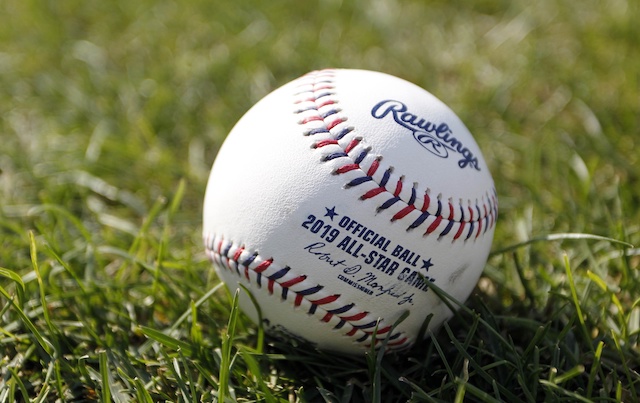The 2019 season brought about another significant increase in home runs across MLB. Teams combined to slug a record 6,776 home runs this year — shattering the previous mark set in 2017 by 671 more.
The uptick only fueled previous speculation that the baseballs had been altered. Many players voiced their opinions on the matter, including Houston Astros ace Justin Verlander, who pinned the blame directly on the league.
MLB commissioner Rob Manfred has repeatedly denied such claims, insisting that the baseballs remained in their original form.
In order to quell these concerns, MLB released a 27-page report that detailed the likely causes of the home run surge in 2019, via ESPN’s Jeff Passan:
Decreases in air resistance spurred by inconsistent seam height on the baseball as well as “changes in player behavior” that produced different launch angles and exit velocities led to the dramatic increase in home runs during the 2019 season, according to a preliminary report released Wednesday by Major League Baseball.
At the end of the report, the committee offered a half-dozen recommendations, including studying how the rubbing mud applied to in-game balls influences drag, installing atmospheric-tracking systems to more easily measure drag in the future and studying the possibility of using humidor systems in all 30 major league stadiums to “reduce the variability in storage conditions.”
The committee of professors ultimately determined that the carry on a ball was the primary factor for the record amount of home runs hit this past season:
Using a methodology developed by Albert, the committee looked at two potential effects on home runs: the carry on a ball, which is affected by drag, and the launch conditions, which depends on players’ swings. The study said that carry contributed to 60% of the home run increase and launch conditions to 40%. Seam height accounts for about 35% of a ball’s carry, according to the report, and the committee developed a new technique that tied seam height to drag coefficient. The report also dismissed “other alternate hypotheses discussed in the media (e.g., roundness, surface roughness, lace thickness),” saying they were not correlated with drag coefficient.
Seams decreased in size to an average of around .0305 inches in 2019, down from .035 inches from 2013 to ’15. The lower the seams, the more aerodynamic the ball, and the more aerodynamic the ball, the longer it will fly, according to the report. While the average seam height has been relatively consistent year over year, according to the study, the professors found “large ball-to-ball variation in those quantities.”
While home runs sailed over the fence at a record pace in 2019, some around the sport believe the baseballs were once again changed during the postseason. Los Angeles Dodgers manager Dave Roberts opined that the game balls seemed different than those used throughout the regular season.
Manfred quickly refuted this theory, claiming that the postseason balls were manufactured with the same materials from the regular season batches.
Have you subscribed to our YouTube channel? It’s the best way to watch player interviews, exclusive coverage from events and more!








